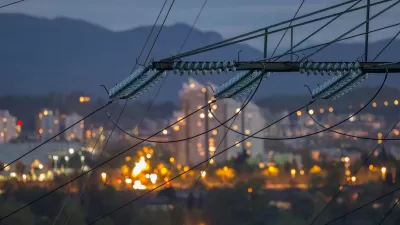As cities look to the Internet of Things to reimagine urban infrastructure, one hope is that real-time data collection will help increase energy efficiency at the regional level. Where do homes outfitted with a network of smart devices fit in?
VerdeXchange News recently interviewed Cole Hershkwoitz, co-founder of Los Angeles-based start-up Chai Energy, who maintains that "smart home" technologies can help connect regional energy providers to efficiency efforts at the residential level.
Chai Energy's app analyzes the energy consumption of a home, producing reports on everything from how many appliances are left on during the day to the financial feasibility of home solar power generation. Chai Pro, the premium product, is a small device that connects to a smart meter to calculate energy use on a second-by-second basis.
"We start with the customer—the problems they face and the life that they want to live," Hershkowitz tells VX News. "We then track that back to the user experience and eventually to their habits and behaviors… It’s about boiling energy data down into information that can help people make decisions and live more sustainably."
Yet the implications of residential communication with the grid surpass individual choices, or even household power bills. Companies like Chai are working to change the way utilities do business:
"We created Chai [in part] to help promote utility energy-efficiency and demand-response programs, and to actually get people to participate in them," Hershkowitz says.
Policy still has to catch up to that vision, and Hershkowitz is closely watching California legislation that he says will finally incentivize utilities to recognize home energy conservation driven by small lifestyle changes—the kind Chai encourages:
"I think policymakers are starting to understand that, especially in the residential space, energy efficiency is so much more about how we use and program the devices around us and a little less about large capital investments in more efficient appliances."
FULL STORY: Internet Of Things: Chai Energy's Connected-Home Technology A Win For Consumers

Alabama: Trump Terminates Settlements for Black Communities Harmed By Raw Sewage
Trump deemed the landmark civil rights agreement “illegal DEI and environmental justice policy.”

Planetizen Federal Action Tracker
A weekly monitor of how Trump’s orders and actions are impacting planners and planning in America.

The 120 Year Old Tiny Home Villages That Sheltered San Francisco’s Earthquake Refugees
More than a century ago, San Francisco mobilized to house thousands of residents displaced by the 1906 earthquake. Could their strategy offer a model for the present?

In Both Crashes and Crime, Public Transportation is Far Safer than Driving
Contrary to popular assumptions, public transportation has far lower crash and crime rates than automobile travel. For safer communities, improve and encourage transit travel.

Report: Zoning Reforms Should Complement Nashville’s Ambitious Transit Plan
Without reform, restrictive zoning codes will limit the impact of the city’s planned transit expansion and could exclude some of the residents who depend on transit the most.

Judge Orders Release of Frozen IRA, IIJA Funding
The decision is a victory for environmental groups who charged that freezing funds for critical infrastructure and disaster response programs caused “real and irreparable harm” to communities.
Urban Design for Planners 1: Software Tools
This six-course series explores essential urban design concepts using open source software and equips planners with the tools they need to participate fully in the urban design process.
Planning for Universal Design
Learn the tools for implementing Universal Design in planning regulations.
Clanton & Associates, Inc.
Jessamine County Fiscal Court
Institute for Housing and Urban Development Studies (IHS)
City of Grandview
Harvard GSD Executive Education
Toledo-Lucas County Plan Commissions
Salt Lake City
NYU Wagner Graduate School of Public Service





























